In this tutorial, we will show you how to run the Logitech Media Server on a Raspberry Pi.
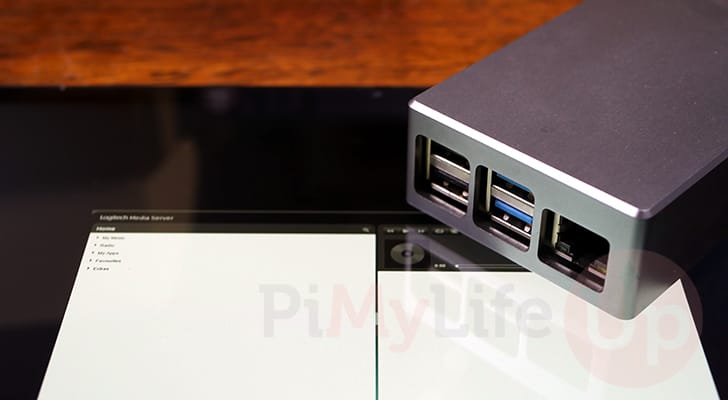
Logitech Media Server, now known as Lyrion Music Server (LMS), is an audio streaming server for Squeezebox devices that you can run off a Pi. This media server has gone through a few different names over the years, starting off as Squeezebox server. It was called this as it was the key method for streaming audio to the Squeezebox series of network music players.
This audio server allows you to stream music over your network to compatible devices and features support for most audio codecs. With the use of plugins, this Squeezebox server can be extended to stream music from music services and internet radio stations.
Setting up your Raspberry Pi with the Logitech Media Server is a great way to revive the Squeezebox series of audio players. The Pi is the perfect choice for this as it consumes relatively little power.
Even if you don’t own a Squeezebox music player, you can still use this music server by using its web interface or by setting up a Squeezebox emulator such as SqueezePlay.
While originally developed by Logitech, this music server has continued to be improved and developed by a dedicated community.
Equipment
Below is a list of the equipment we used to set up the Logitech Media Server on our Raspberry Pi.
Recommended
Optional
This tutorial was last tested on a Raspberry Pi 5 running Raspberry Pi OS Bookworm 64-bit.
Installing and Running Logitech Media Server on the Raspberry Pi
In the following sections, we will walk you through setting up the Logitech Media Server (LMS) on your Raspberry Pi.
For these steps, we are using the terminal. If you are running a desktop version of Raspberry Pi OS, you can open the terminal by pressing CTRL + ALT + T on your keyboard.
Before proceeding any further, you may want to have your music libraries already set up on your Pi. If you have these on an external drive, then consider following our guide on mounting drives.
You may also want to improve this guide further by setting up a SAMBA share.
Preparing your Raspberry Pi
1. Before we set up the Logitech Media Server on your Raspberry Pi, you will want to ensure your operating system is up to date.
You can update the package list cache and upgrade any out-of-date packages using the following two commands.
sudo apt update
sudo apt upgrade -yCopy2. After updating your Pi, you must install the packages we require to run the Squeezebox software. There isn’t a huge number of tools we require to install the media player, mainly we require “wget” and the “libcrypt-openssl-rsa-perl” packages.
Anything else we require should be installed when we install the server itself.
sudo apt install wget libcrypt-openssl-rsa-perlCopyDownloading and installing the Logitech Media Server to your Raspberry Pi
3. We have now prepared your Raspberry Pi and can move on to downloading the Logitech Media Server. The version we have linked in the command below might be different from the latest version of the server. You can find newer builds by going directly to the Lyrion Music Server website.
To easily download the media server, use the following command within the terminal.
wget https://downloads.lms-community.org/LyrionMusicServer_v9.0.2/lyrionmusicserver_9.0.2_arm.deb -O logitechmediaserver_arm.debCopy4. With the Logitech Media Server package now downloaded to our Raspberry Pi, installing it is a straightforward process.
Run the following command to use the apt package manager to install the Debian package we downloaded. The advantage of using apt to install this package is that it will also install any dependencies.
sudo apt install ./logitechmediaserver_arm.debCopyConnecting to the Logitech Media Server Web Interface
5. Upon installing the Logitech Media Server onto your Raspberry Pi, it will immediately start its web server. You can use this webserver to perform initial setup steps and play any music stored on your Pi.
Of course, to access this web interface you will need to know the IP of your Raspberry Pi. One of the easiest ways to get your Pi’s IP address is to use the hostname command.
hostname -ICopy6. With your IP address in hand, you will want to go to the following URL in your favorite web browser.
Ensure you replace “<IPADDRESS>” with your Pi’s IP address.
http://<IPADDRESS>:9000Running through the Initial Setup of the Squeezebox Server on the Raspberry Pi
7. When you first access the Logitech Media Server’s web interface, you will be prompted to select where your music files are located locally.
Use the box on the left side of the screen to locate and select where your music files are stored (1.).
Once you have selected your music files’ folder, click the “Next” button to continue (2.).
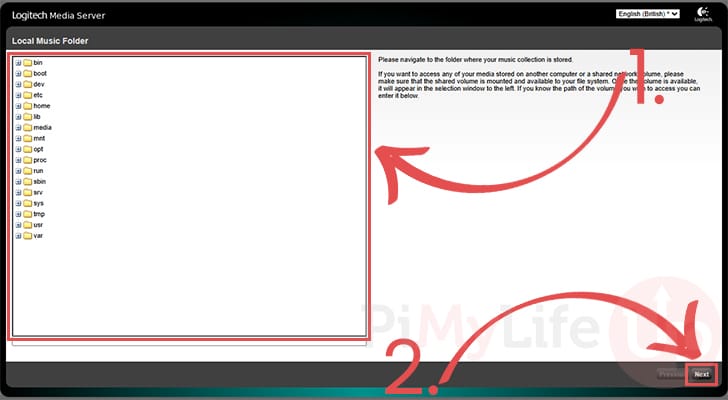
8. Next, you will need to select the folder where your playlists are stored using the box on the left-hand side of the screen (1.).
After selecting the playlist folder, click the “Next” button (2.) to finish setting up your Raspberry Pi Squeezebox server.
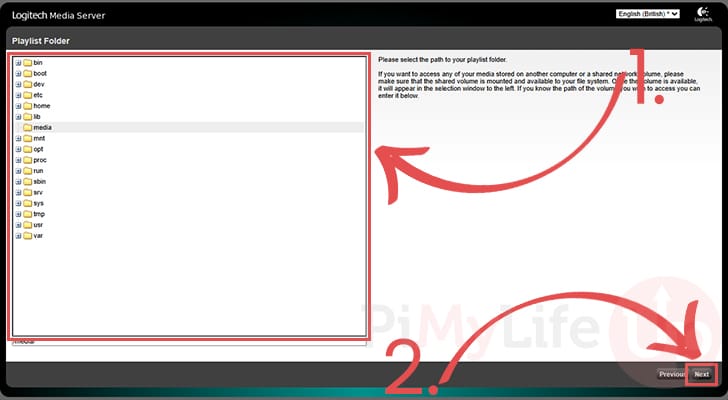
9. You have successfully set up the media server on your Pi, you should now be able to connect your various Squeezebox devices to this server and begin streaming your audio.
This screen will explain how to can use your new server on your Squeezebox devices.
After reading through this screen, you can continue to the web interface by clicking the “Finish” button.
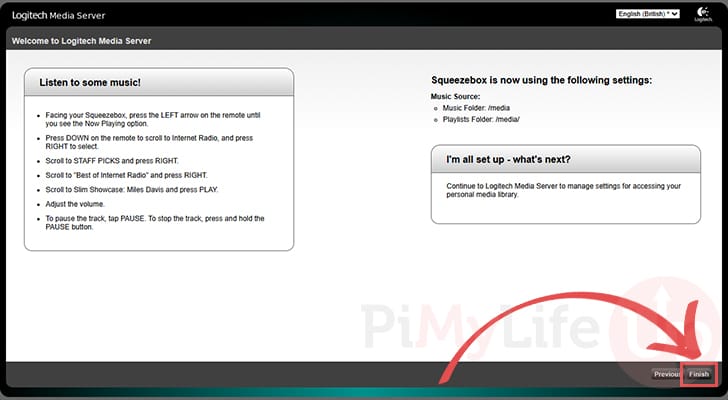
10. Below, you can see that we now have access to the Logitech Media Server web interface. We don’t currently have any music files set up yet, but you can see what the interface looks like.
You can use this web interface to control and manage your media files.
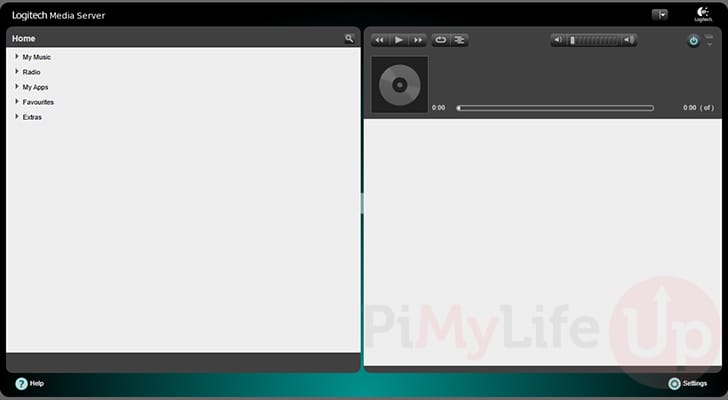
Conclusion
At this stage of the guide, you should have a good idea of how to install and run the Logitech Media Server.
This media server allows your Raspberry Pi to stream audio files to any Squeezebox-compatible device. Even though Logitech might have abandoned these devices, a community has worked hard to continue improving the software and keeping these music players running.
Please feel free to comment below if you have any questions about running this media server on your Pi.
If you liked this project, we highly recommend taking the time to browse through our many other Raspberry Pi guides.
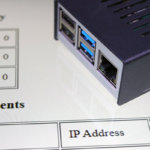


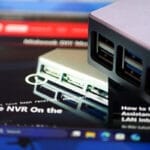
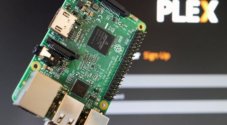

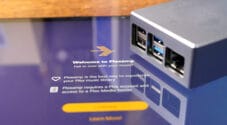

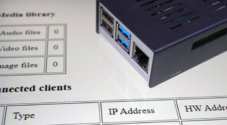
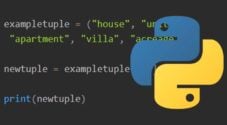
I love you man. Your original guide had my pi up and running as a SB server for the last few years, and after the install got corrupted a couple of weeks ago, your new guide was again superbly well explained and easy to follow. Outstanding work sir.
Good easy tutorial. Now it’s probably better to use the lyrion* packages version 9.x. I installed that yesterday in my rpi4 and works like a charm with my old Squeezebox classic.
Hi Charlarg,
Glad it worked out well for you and thank you for letting us know about the newer version. I updated the guide to download the latest release.
Kind regards,
Emmet
Fantastic tutorial, I’m a Linux beginner and I was able to set it up and bring my Sqeezebox back to life. Wow, thank you very much for your effort!
excellent guide!!